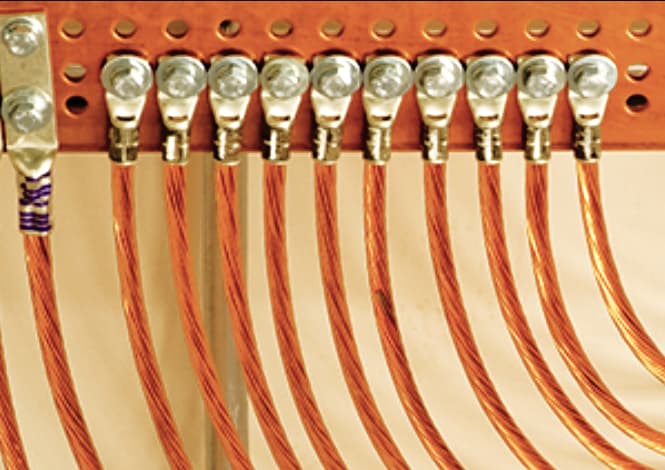When ground wiring is not done properly, grounding of various points is not effective and potential differences exist between them resulting in currents flowing between them. This leads to measurement errors and is not desirable. It can be eliminated by proper ground wiring.
A ground loop is a potentially problematic situation in an electrical system, specifically in signal transmission and communication systems, where there are multiple paths to the ground or earth. Ground loops can occur when different devices, which are connected to each other, are also grounded at different points.
Ground loop
In an ideal situation, all components of an electrical system should share a common ground reference point, often called a “star point,” where all ground paths converge. However, in many installations, devices might be grounded at different locations. The problem here is that if there is any electrical potential difference between these grounding points, it can cause an unwanted current to flow through the signal path. This is what is referred to as a “ground loop.”

The ground loop can introduce noise and interfere with the accuracy and reliability of signal transmission. This is especially problematic in audio and video systems, where it can lead to hum or buzz in audio outputs or bands on video displays.
Preventive Steps to Avoid Ground Loops:
-
Star Grounding: Try to establish a single ground or “star” point that all devices connect to. This can eliminate the potential difference between multiple ground points, thus preventing ground loops.
-
Isolation: Use isolation transformers or opto-isolators in signal paths to break the loop. They can help to eliminate the physical and electrical connection in the signal path, thus blocking the path for unwanted ground loop currents.
-
Use Balanced Lines: In audio systems specifically, balanced cables (like XLR or TRS) can be used. These cables have two signal conductors and a separate ground, and they can help to reject common-mode noise, including that caused by ground loops.
-
Use of Ground Loop Isolators: These devices are designed to break the path of the ground current but still allow the signal to pass from one side to the other. They can be effective in situations where other solutions are not practical.
-
Cable Routing: Keep signal cables away from power cables where possible to avoid picking up noise.
-
Proper Equipment Grounding: Ensure all your equipment is properly grounded as per manufacturer’s instructions. Always follow safety guidelines when dealing with grounding as it is crucial to prevent electrical shock.
-
Care with Coaxial Cable: For systems using coaxial cables, make sure the shield is grounded at one end only to avoid creating a ground loop.